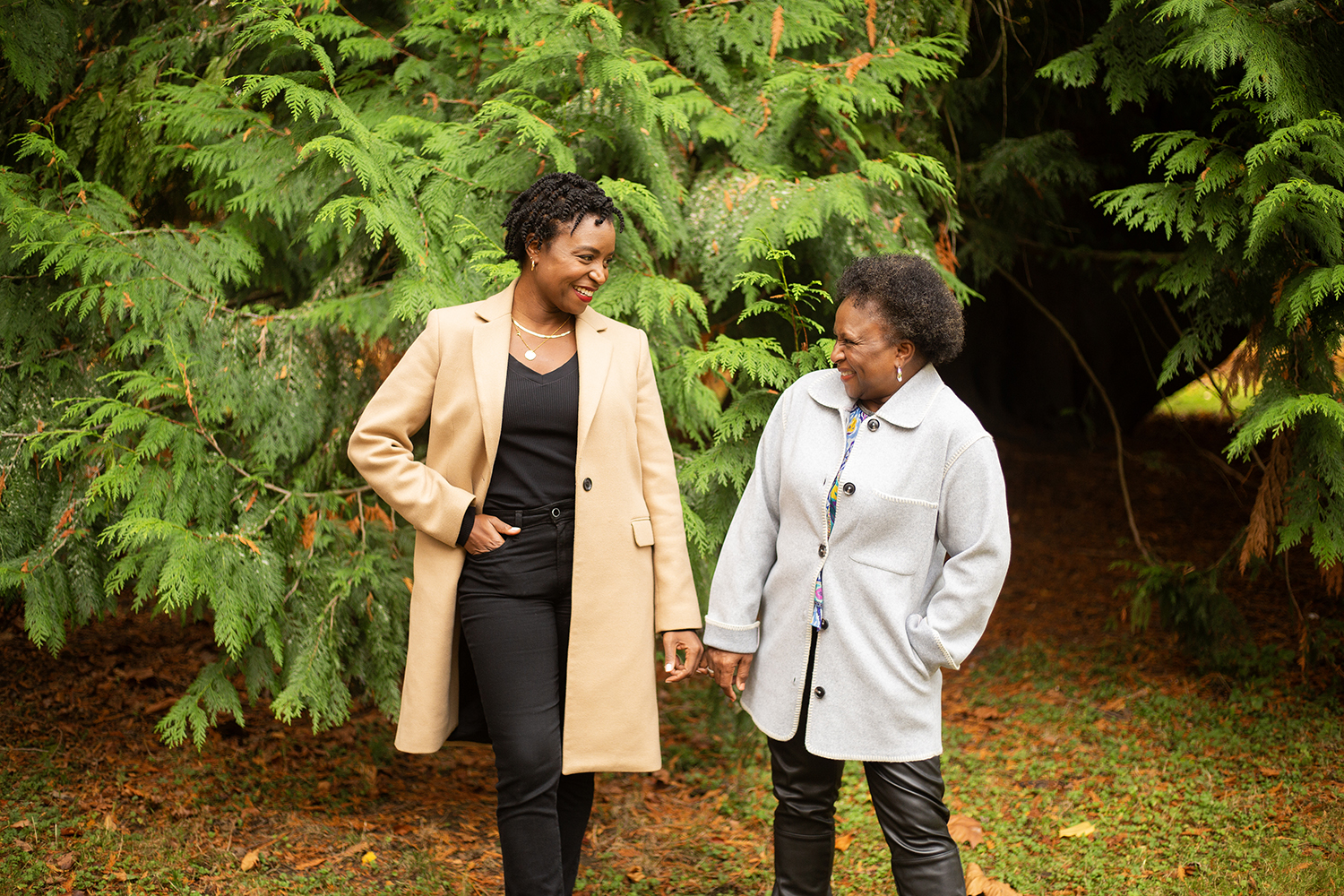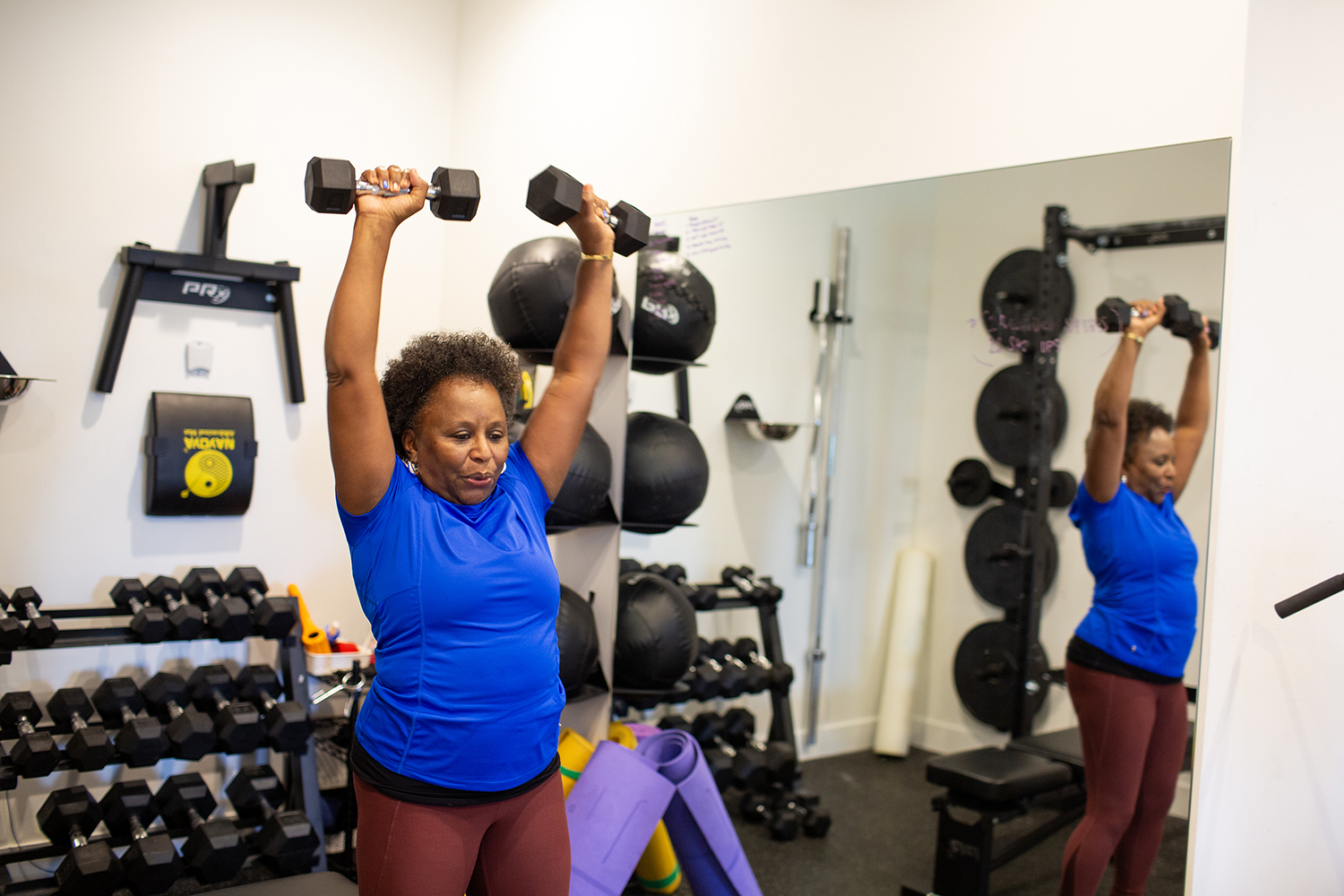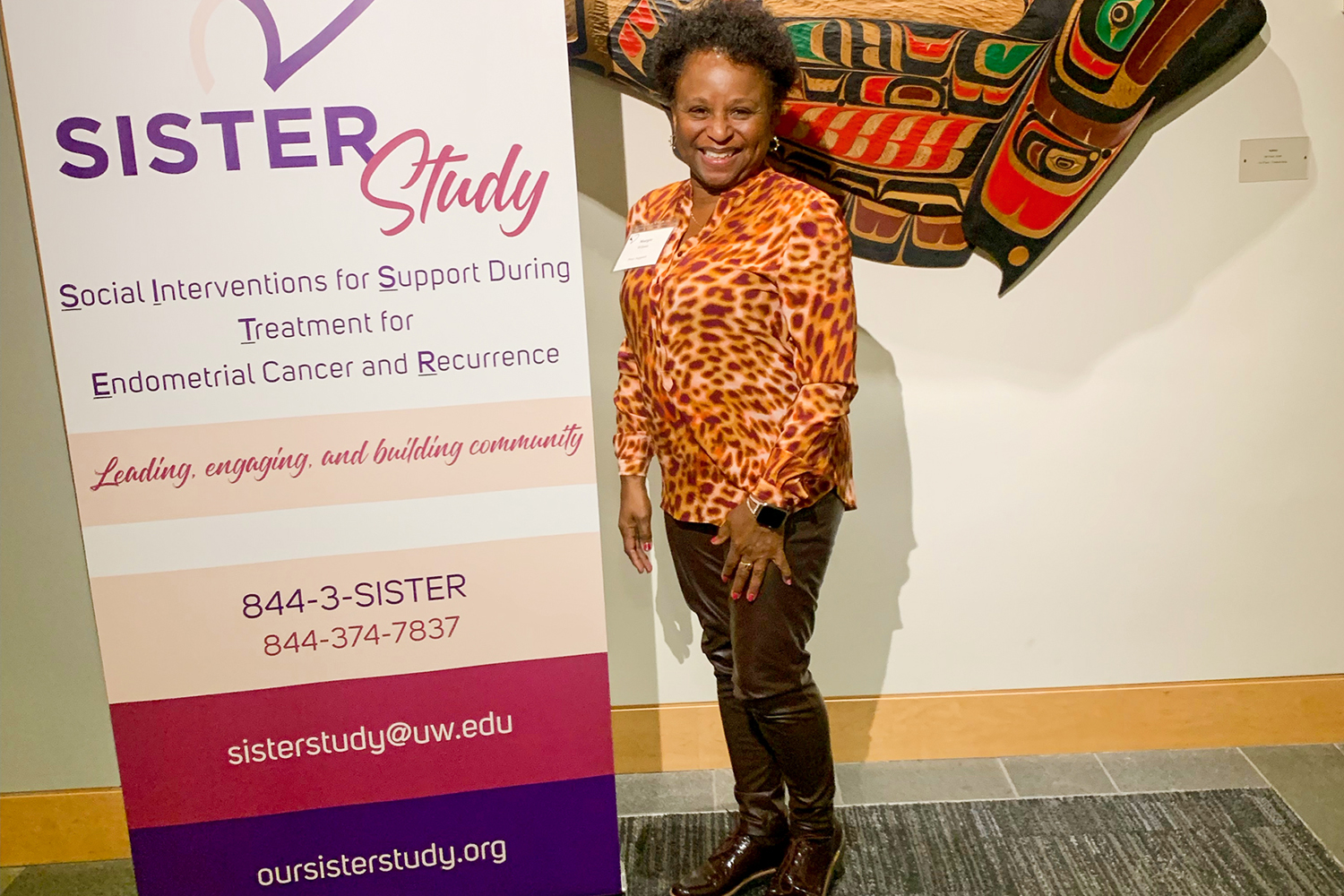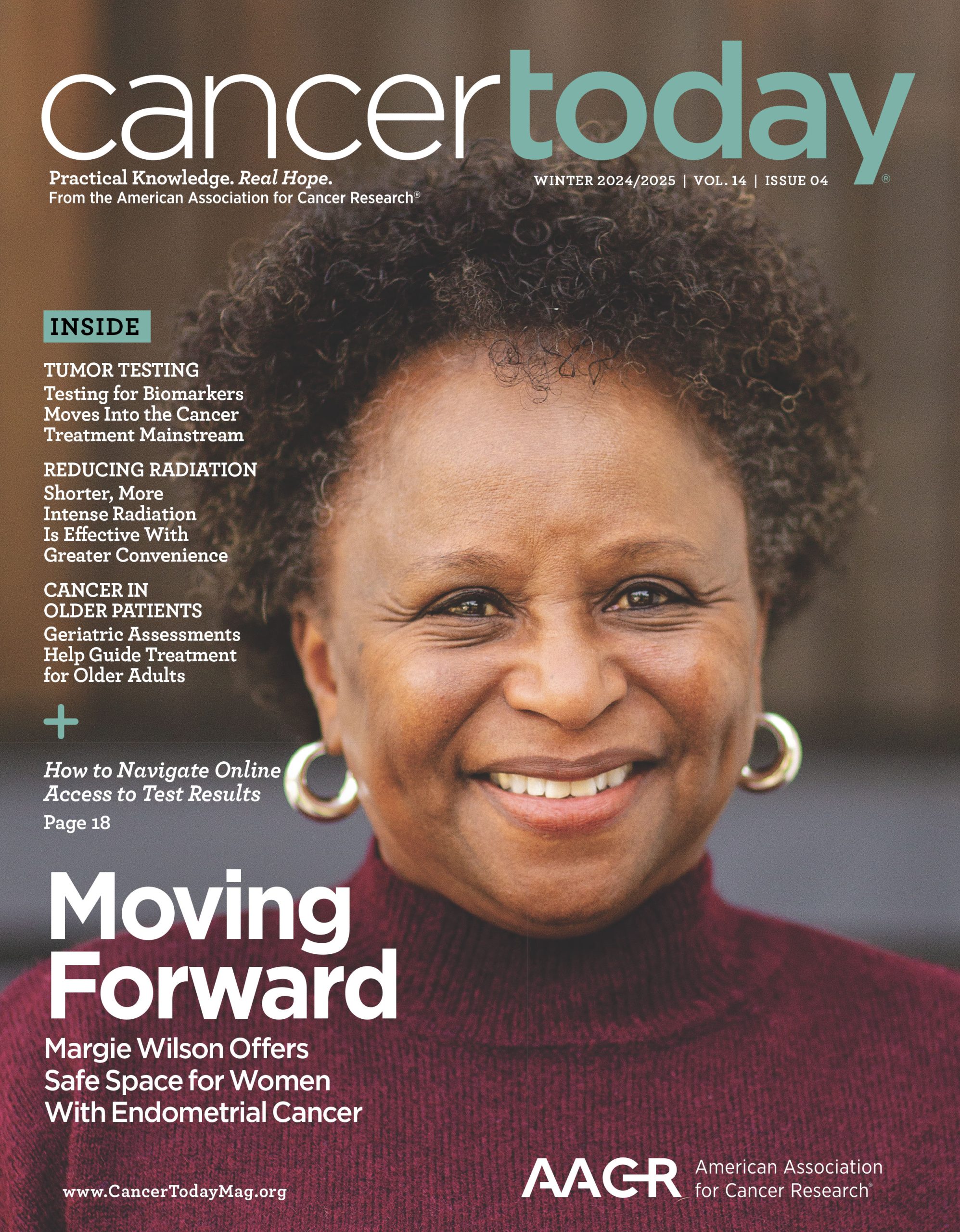MARGIE WILSON didn’t think her irregular bleeding was anything to be concerned about.
Sometime in the spring of 2015, the 57-year-old fitness instructor told her gynecologist that she had vaginal bleeding—which had become heavier and increasingly erratic. The gynecologist performed a pelvic ultrasound, which showed some thickening in her uterine lining, and told her she should see a specialist.
“I’m not thinking I have cancer or anything,” she remembers telling her doctor. “I just felt like I needed to fix this menopause thing.”
Wilson was in the middle of a divorce, ended up losing her health insurance coverage and was preparing to move to Seattle—so she put off seeing another health care provider. She had always kept up with her woman’s wellness checks and gynecologic cancer screenings, including routine mammograms and Pap tests. She decided she would check in with a new doctor after her move to Seattle. Her justification for the delay? “I wasn’t in any kind of pain.”
At the time, the bleeding seemed like a bothersome but normal part of getting older. “Your body goes crazy during menopause, right?” Wilson says as she looks back at that time. “You go three months, no period. Why would I talk to a doctor? I’m healthy. I don’t need to talk to a doctor. I’m good.”
After settling into her new home in spring 2016 and getting health insurance, Wilson saw a new gynecologist who also noticed increased thickening of her uterine lining through ultrasound imaging. The doctor performed an in-office biopsy and gave her a referral for a gynecologic oncologist.
Still, she wasn’t alarmed until her oldest daughter, Tina Scott, told her what oncologists treat. “Mom, they think you have cancer,” she told her mother. Ultimately, Wilson was diagnosed with endometrial cancer.
A Commonly Overlooked Sign
A telltale sign of endometrial cancer, which grows in the uterine lining and is sometimes called uterine cancer, is abnormal vaginal bleeding. The most common cancer of the female genital tract, endometrial cancer is the fourth most common cancer overall among women in the U.S. It has an 81% five-year relative survival rate, but Black women who are diagnosed with the disease are less likely to survive than white women with the disease.

Margie Wilson’s oldest daughter, Tina Scott, helped support her mother during treatment. Photo by Rachel Coward
When Wilson met with a gynecologic oncologist in October 2016, she felt even more confused and overwhelmed. She brought a friend with her to the appointment. “I remember my friend saying [to the doctor], ‘Can you slow down? You’re talking too fast. Excuse me, doctor, she doesn’t know what that means.’ And he would look at her and then just keep talking. It was horrible,” Wilson says.
The oncologist told Wilson she would need to have surgery to remove her uterus, but Wilson remembers the doctor also saying he wouldn’t know if it was cancer until after the surgery. She questioned whether she needed the surgery if it might not be cancer. “I remember him saying, ‘It looks like a carcinoma. We’re going to take everything out,’” Wilson says. “He said I was 58 years old and didn’t need it anyway.”
At the time, Wilson found out that only one other hospital would accept her medical insurance plan, so she promptly scheduled her surgery with the gynecologic oncologist, thinking that she could always cancel if she changed her mind. On Oct. 21, 2016, she had surgery that removed her uterus, ovaries, fallopian tubes and some lymph nodes. Her doctor noted he got “good margins,” meaning the outer edges of the excised cancer included only healthy tissue, which was a good sign that the procedure had been successful.
Black women with endometrial cancer face a lower survival rate and other disparities associated with worse outcomes.
Women in the U.S. have about a 3% lifetime chance of developing endometrial cancer. The most recently available survival statistics, based on data collected from 2014 to 2020, suggest most of these people will survive. The five-year relative survival rate, which is the percentage of people who have survived the diagnosis compared with those who don’t have cancer, is 80.8% for all women. However, the survival rate for Black women is 63%, compared with 83% for white women.
In addition, when compared with white women:
- Black women often have a higher prevalence of uterine fibroids, which can distort visualization of the endometrial cavity on an ultrasound and reduce the accuracy of this screening method.
- Black women are more likely to be diagnosed with endometrial cancer at an advanced stage.
- Black women are more likely to be diagnosed with endometrial cancer that has molecular features suggesting the cancer is aggressive.
- Even when Black women are diagnosed with early-stage endometrial cancer, they are less likely to receive a hysterectomy, the standard of care for the disease, and have decreased survival.
- Black women are less likely to have a molecular subtype of endometrial cancer that has high microsatellite instability, which means they are less likely to benefit from immunotherapy.
She found out that the cancer had not spread beyond the uterine wall, which meant it was stage I, but the cancer was considered grade 3. This meant the cancer had features that suggested it could be aggressive. Her doctors told her she would need to undergo chemotherapy followed by radiation to reduce her chance of recurrence. Still uncertain, Wilson decided she needed to get another opinion. Her youngest daughter, Onnie Rogers, asked a friend who was a doctor for recommendations. That’s how she learned about gynecologic oncologist Kemi Doll, who was studying endometrial cancer disparities in Black women at UW Medical Center in Seattle.
Going Forward With Support
It wasn’t until Wilson met with Doll, who explained the benefits and risks of treatment, that she realized how imperative it was to have a doctor who was Black and a woman, her friend Gail Harrington recalls. “Dr. Doll responded not only to the cancer but responded to her as a woman of color and a human being,” Harrington says. Doll sat down with Wilson and drew pictures to illustrate how chemotherapy and radiation could reduce the chance of her cancer coming back. “Dr. Doll could tell that I was very hesitant, scared and overthinking it,” Wilson says. “I ultimately decided to do it [chemo and radiation] because it made sense, based on how she explained it to me.”

A fitness instructor, Margie Wilson encourages cancer survivors to incorporate movement into their daily routines. Photo by Rachel Coward
Throughout her treatment, Wilson says she was blessed with the support of friends and family, whom she asked to pray for her. Her friends also circulated her treatment schedule among themselves and made sure someone accompanied her to every chemotherapy and radiation appointment. She recalls when Rogers, who lives in Chicago, flew in for her first chemotherapy treatment. Her family made sure to set up short visits with her grandchildren, who are a source of joy for Wilson. This support system helped her stay positive through the difficult treatment ordeal. “She had a playlist that inspired her, and it was always on,” Scott, her older daughter, says. “By the time chemo and radiation were complete, we all were singing the songs.”
Wilson’s path was not without challenges, including hair loss, neuropathy and fatigue. After her first chemotherapy round, she told Scott she could feel and hear her hair falling from her head. “She pulled some out to show me, and as the hairs slid from her scalp, we both started crying,” says Scott, who remembers hugging her mom. Together, they came up with a plan to shave Wilson’s head and accentuate her style with scarves and wigs.
The Road to Recovery
During treatment, Wilson got acupuncture, which helped manage her nausea and neuropathy, and she made sure to drink lots of water. “I drank so much water when I was on chemo because in my little crazy mind I thought, ‘If you’re putting it in me, it’s going to do what it needs to do, but I’m washing the rest out,’” Wilson says. She committed to a clean lifestyle with no sugar, alcohol or processed foods.
Wilson slowly built back her strength, progressing from walking to low-impact aerobics and abdominal workouts, routines that had been part of her exercise regimen before cancer. “I always tell people, ‘The stronger you are when you’re attacked with something, the easier it is for you to recover,’” she says.

Margie Wilson is a peer supporter who connects with people who are participating in the Sister Study, a national clinical trial that focuses on improving outcomes for Black women with endometrial cancer. Photo by Rachel Coward
After working closely with Doll and others, Wilson has grown from not knowing what an oncologist does to educating other Black women about their treatment options, including participating in clinical trials. In 2017, Doll asked her to join her efforts as she launched the Endometrial Cancer Action Network for African Americans (ECANA), an online community that helps educate and connect Black women who have the disease. Using her background in fitness, Wilson leads online chair yoga sessions that include conversations and community through the organization’s website. She encourages women in the exercise groups to move, even if it’s just walking to the mailbox daily. She participates in Bible studies through the organization and encourages women to arm themselves with knowledge and not go it alone.
Just as Wilson drew strength from a network of friends and family members who stood by her during treatment, she hopes to provide a safe space that can ensure Black women with endometrial cancer recognize the signs and find ways to educate themselves. She encourages other women to seek out resources so they can understand their cancer treatment. “Do not fight this battle by yourself,” she says. “Support raises the survival rate.”




